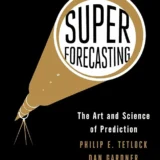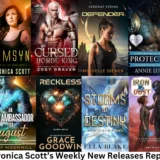But, But, But…You Bought My Last Story: What Your First Sale Really Means
Welcome back to my series on marketing and selling short fiction. I’ve written these posts in a very specific sequence, with each entry building on earlier ones. You can read my earlier posts here.
In part 17, I kicked off a mini-series on what happens when you finally sell a story. Parts 17-19 dealt with short fiction contracts, and parts 20-21 covered working with an editor.
This week, I’ll talk about what to expect the next time you submit a story after you’ve made your first sale, including to the market that has just published you.
Your First Sale! Enjoy the Warm Glow
You’ve sold your first story! Congratulations! No, seriously…major congratulations! It’s a great feeling, isn’t it? Somebody actually is out there listening. You’re not just tossing your stories into some dark abyss of oblivion. Real honest-to-goodness readers (who aren’t related to you) are now going to be reading your words. Cool, eh? Plus you’re getting paid money for your work (you did submit to a paying market, right?).
That first sale is a major ego boost, and beginning writers always need that. It’s an affirmation that you’re on the right path, that you can sell what you write, that your dream is achievable.
Yes, the feeling from your first sale is awesome and will always remain with you as a warm fuzzy glow somewhere in your heart. My first sale was my novelette “Spirit Dance” to the Canadian anthology series, Tesseracts, which was edited that year by the multi-award winning SF author, Robert J. Sawyer and his wife, the poet Carolyn Clink. I got my acceptance letter in the mail (yes, the kind that shows up in an envelope in your mailbox–this was the nineties) on New Year’s Eve. I couldn’t think of a better way to end one year and start another, and I can still remember the thrill of reading that acceptance letter. That first story eventually led to my first award and much later to my first novel, The Wolf at the End of the World (due out later this year).
So, yeah, bask in the glow. Enjoy the warm fuzzies.
And Now for Reality…
So now you’ve made it, right? Wrong. You’ve sold a story. One story. That’s it.
Your first sale doesn’t guarantee that you’re going to sell the next story to the next market where you submit. It doesn’t even guarantee that the market that just published your first sale will buy the next story that you send them. Or any story you ever send them again.
Surprised? Most beginners are. Most believe that their first sale has launched them and that now editors will snap up everything they write. My second sale, and my first big pro sale, was to the UK magazine, InterZone, back when it was still owned by David Pringle before it became part of the excellent TTA Press stable of magazines.
This was huge to me. InterZone was one of my favourite magazines with a high prestige factor. People knew InterZone. Selling to them was a big deal. I figured that I’d made it. I promptly moved them to the top of my market list for submissions and mailed them off my next story.
Which was rejected. As was every other story I sent them. I’ve sold to InterZone since, but never again while David was editor. Obviously, I still went on to sell more stories to pro markets, but I still remember my shock at those subsequent rejections from IZ. Those bounces were almost as surprising as my first acceptance.
Why One Sale Doesn’t Guarantee the Next
Why does that happen? Obviously, you say, that editor likes your writing, or they wouldn’t have bought your first story. So why shouldn’t they buy your next one?
Because editors buy stories, not writers. Oh, sure, if you’re a “name” writer, they’ll buy you. They’ll buy Steven King or Neil Gaiman or any other writer that most of us have heard of. But they’ll buy those writers precisely because most of us have heard of them. They want a “name” on their cover that will help sell their issue or their anthology. Plus they know that they’re going to get a good, or at worst, a publishable story from a big name. Big payback, low risk.
If you’ve sold one story, you’re not a name. One day, hopefully, but not yet. And unless, you’re a name, then you need to remember that an editor buys a story not a writer. Your next story will still compete with all of those hundreds of other stories that any market receives. If you need to refresh your memory on how an editor makes a buying decision, go back and reread part 14 in this series.
But the short answer to how to sell your next story is the same as how to sell your first story: continue to write the best stories that you can and to keep learning your craft. That’s the only part of this scenario that you control as a writer.
What Your First Sale Really Means
So if your first sale doesn’t guarantee the next one, then (aside from the warm fuzzies it gave you) what does your first sale mean?
Well, most importantly, you can now cite a professional publication credit in your future cover letters and cover emails, which might get you out of the slush pile for some markets. Or it might not (sorry, but it’s only one sale).
Even if it does get you out of the slush pile for a market, that only means that someone is going to read your story earlier than the stories sitting in slush. And all that means, in all probability, is that you’re going to get a rejection faster than you did in the past.
(You also may find that you start to get more personalized rejections, although don’t count on it. The market that you just sold to is more likely to start doing that for you, but no promises even on that.)
Faster Rejections are a Good Thing
“What?!? That’s it?” you say (or perhaps scream). “I finally sell a story, and all it brings me are faster rejections?”
Uh, yeah. Sorry, but that’s the reality.
Why? Again, because it’s just one sale. Warm fuzzies aside, you haven’t done that much in the cold cruel world of professional publishing. You know you have, and you can feel how huge that first sale was to you, but you are still just one of hundreds of thousands of wannabe writers who are still building their credits, one sale at a time.
But don’t discount faster rejections. They mean that you can get that story out to another market quicker. Remember what I told you in part 13: it’s a numbers game. The writer with the most stories out in front of the most pro markets is going to win. Eventually, a story that keeps getting rejected is going to sell. Faster rejections along the way means that you will sell your stories sooner.
Next Week
In part 23, I’ll talk about how to deal with another good news / bad news aspect of publishing your first story…the ever anticipated, ever dreaded reviews.
Next Week: They Said WHAT?!?: Dealing with reviews
As always, please feel free to add comments and questions, and I’ll respond as best (and as soon as) I can.
~~~~~
PLAYING THE SHORT GAME — The Book!
I am thrilled to announce that I have now repackaged the 32 separate posts that make up this blog series into a book titled Playing the Short Game: How to Market & Sell Short Fiction. The book is completely updated and reorganized, with new material not in this blog series, plus an introduction from multi-genre, multi-award winning writer and editor, Kristine Kathryn Rusch. Here’s an extract from Kris’s intro:
Douglas Smith is the best person to write this book. … He’s one of the few people who has probably published more short fiction than I have, and in more countries, and more high-paying markets. He loves the short story as much as I do, and he’s good at writing them.
He’s just as good at the business side of the profession. He knows more about marketing short stories to other countries than I do. He understands how to manage short fiction contracts very well. He’s up-to-date on 21st century publishing practices, and he has a toughness that the best business people need.
We short story writers have needed a book like this for decades. I’m glad Doug decided to write it. Read and reread this volume. Because you’ll learn something each time you do. And take Doug’s advice. It’s spectacular.
—Kristine Kathryn Rusch
More information on the book, including full buying links for all major retailer sites, is available on my website here.
As a special offer to Amazing Stories readers, I’m offering discounts in my bookstore. Get the ebook or print edition at a discount by using the coupon codes AS-SHORT-E or AS-SHORT-P respectively at my website bookstore. Enjoy!
Doug is an award-winning Canadian writer whose fiction has appeared in twenty-five languages and thirty countries. His works include The Wolf at the End of the World, Chimerascope, and Impossibilia.










Yep, that’s the right attitude. Faster rejections = a good thing.
Thx for dropping by.
I think it says something about me that my first thought at ‘faster rejections’ was ‘Jesus, that would be AWESOME.’ I hate the wait.